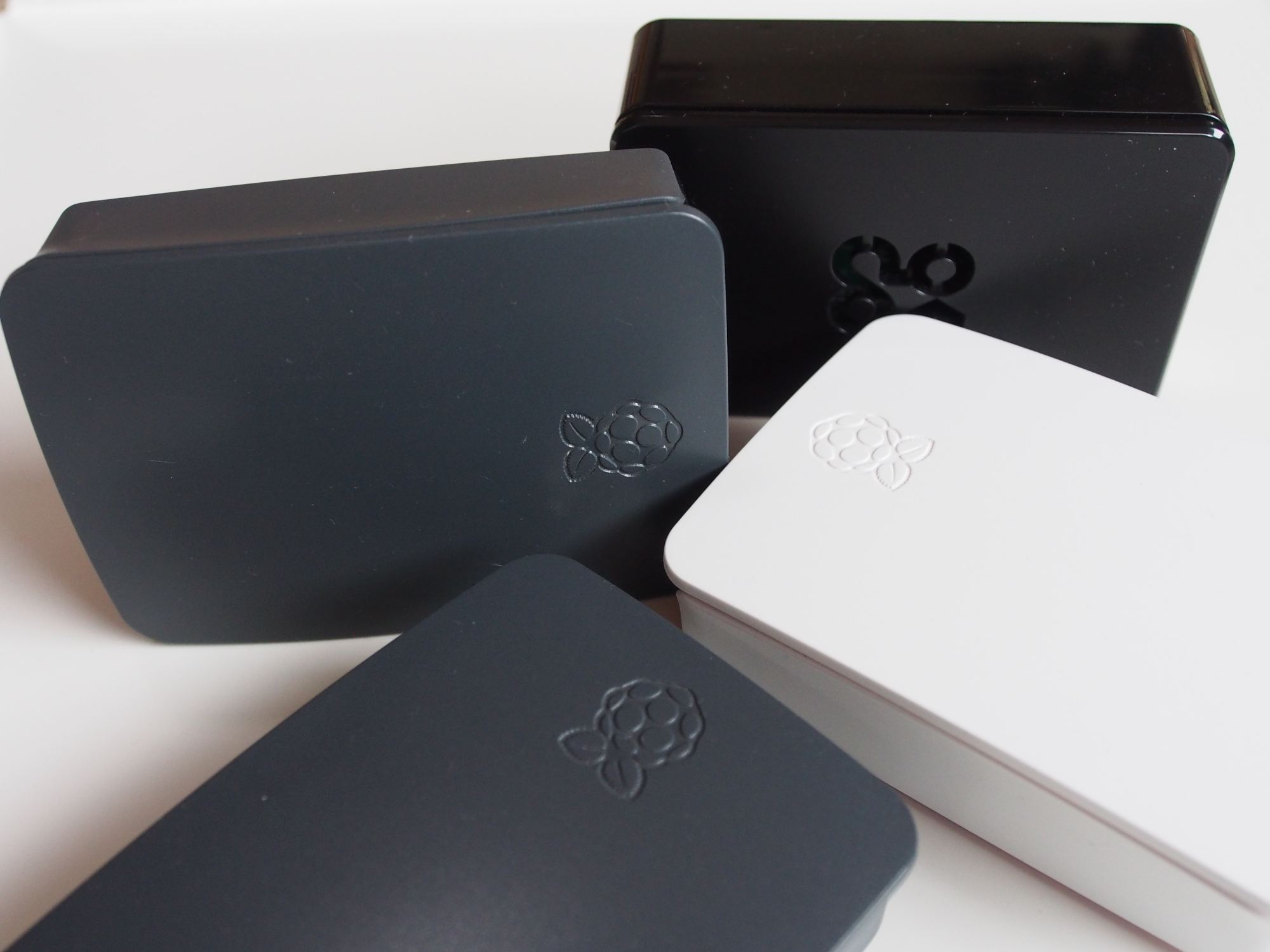Debian tool chain and image generation for the Raspberry Pi 2, 3, 4 and 5.
Note
The master branch is currently basing upon Debian bookworm. For Debian bullseye please check out the debian_bullseye branch.
The edi configuration contained in this repository can be used to generate the following artifacts:
- A Debian bookworm arm64 (64bit) image suitable for the Raspberry Pi 3, 4 or 5.
- A Debian bookworm armhf (32bit) image suitable for the Raspberry Pi 2.
- Matching Mender update artifacts for the above configurations.
- An LXD container with a pre-installed cross development toolchains (armhf/arm64) for C and C++.
Note
Raspberry Pi 5: The Raspberry Pi 5 integration is brand new and might still come with a few glitches.
Warning
New Raspberry Pi 4 bootloader integration: Starting with Debian bullseye the Raspberry Pi 4 setup in regard to the bootloader integration has changed: Instead of U-Boot the setup now directly relies upon the Raspberry Pi bootloader. The new "tryboot feature" together with a custom Mender integration allowed us to solve the device tree handling during A/B updates issue. To make use of this new setup a recent (>=2021-04-19) bootloader EEPROM is required. Please upgrade your Raspberry Pi 4 EEPROM prior to using this new setup. Unfortunately this new bootloader integration is incompatible with the previous setup. Additional work would be required to migrate an existing installation over the air from the previous setup to this new setup. At the moment an existing installation using the old bootloader setup will need to be re-flashed.
Please note that image generation operations require superuser privileges, and therefore you can easily break your host operating system. Therefore, make sure that you have a backup copy of your data.
edi-pi would not be possible without the fantastic Raspberry Pi community. Special thanks go to the people behind those two projects:
- Advanced Debian "jessie", "stretch" and "buster" bootstrap script for RPi2/3.
- Raspberry Pi 3 Debian Image Specification.
Prior to using this edi project configuration you have to install edi according to this instructions. Please take a careful look at the "Setting up ssh Keys" section since you will need a proper ssh key setup in order to access the container or the target device using ssh.
The image post-processing commands require some additional tools. On Ubuntu 20.04 and newer those tools can be installed as follows:
sudo apt install e2fsprogs dosfstools fdisk bmap-tools mtools parted rsync zerofree python3-sphinx mender-artifactA Raspberry Pi image can be created using the following command:
For Raspberry Pi 5, arm64:
sudo edi -v image create pi5.ymlFor Raspberry Pi 5, arm64, prepared for GitOps (git and Ansible preinstalled):
sudo edi -v image create pi5-gitops.ymlFor Raspberry Pi 4, arm64:
sudo edi -v image create pi4.ymlFor Raspberry Pi 4, arm64, prepared for GitOps (git and Ansible preinstalled):
sudo edi -v image create pi4-gitops.ymlFor Raspberry Pi 3, arm64:
sudo edi -v image create pi3.ymlFor Raspberry Pi 2, armhf:
sudo edi -v image create pi2.ymlThe resulting image can be copied to a SD card (here /dev/mmcblk0) using the following command (Please note that everything on the SD card will be erased!):
For Raspberry Pi 5, arm64:
sudo bmaptool copy artifacts/pi5.img /dev/mmcblk0For Raspberry Pi 4, arm64:
sudo bmaptool copy artifacts/pi4.img /dev/mmcblk0For Raspberry Pi 3, arm64:
sudo bmaptool copy artifacts/pi3.img /dev/mmcblk0For Raspberry Pi 2, armhf:
sudo bmaptool copy artifacts/pi2.img /dev/mmcblk0If the command fails, unmount the flash card and repeat the above command.
Once you have booted the Raspberry Pi using this SD card you can access it using ssh (the access should be granted thanks to your ssh keys):
ssh pi@IP_ADDRESSThe password for the user pi is raspberry (just in case you want to
execute a command using sudo or login via a local terminal).
To enable over the air (OTA) updates, the generated images are configured
to connect to https://hosted.mender.io/.
In order to connect to your Mender tenant you have to provide your tenant token prior to building the images.
The tenant token can be added to configuration/mender/mender.yml. If you do not want to
add the tenant token to the version control system you can also copy configuration/mender/mender.yml to
configuration/mender/mender_custom.yml and add the tenant token there.
A cross development container can be created using the following command:
sudo edi -v lxc configure edi-pi-cross-dev-bookworm pi-cross-dev.ymlThe container can be accessed as follows (the password is ChangeMe!):
lxc exec edi-pi-cross-dev-bookworm -- login ${USER}Or with ssh (Hint: retrieve IP_OF_CONTAINER with lxc list):
ssh IP_OF_CONTAINERYou can directly start to cross compile applications:
For the Raspberry Pi 3, 4 or 5, arm64:
aarch64-linux-gnu-g++ ...For the Raspberry Pi 2, armhf:
arm-linux-gnueabihf-g++For your convenience, the LXD container shares the folder edi-workspace with the host operating system.
During the image build the documentation gets rendered to artifacts/CONFIGNAME_documentation as reStructuredText. The text files can be transformed into a nice pdf file with some additional tools that need to be installed first:
sudo apt install texlive-latex-recommended texlive-pictures texlive-latex-extra texlive-xetex latexmkThen the pdf can be generated using the following commands:
cd artifacts/CONFIGNAME_documentation
make PDFLATEX=xelatex latexpdf
make PDFLATEX=xelatex latexpdfFor more information about this setup please read the edi documentation and this blog post.
For details about the Mender based robust update integration please refer to this blog post.
If you are curious about the U-Boot bootloader setup please take a look at this blog post.
For the kernel build instructions related to the Raspberry Pi 4 and 5 please check this blog post.
The WiFi setup is documented here.
A GitOps example can be found here.
